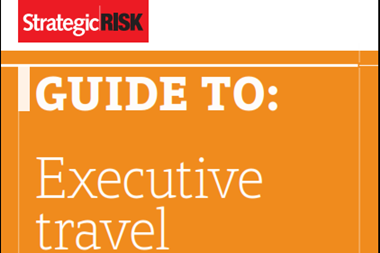The threat of kidnap is increasing and is not limited to known hotspots such as South America and parts of Asia. It is starting to emerge in a variety of guises in Europe, where extortion is a common threat

From an insurance perspective, there are important differences between the various types of kidnap, which each carry a range of ramifications for employers.
Express kidnapping, for example, is actually a robbery rather than a kidnap. The definition of a kidnap is that someone else gets the ransom threat and that doesn’t happen with express kidnaps. Victims need to claim on their household policy or a travel policy.
Coverage for a tiger kidnap (see below) could be very expensive under a kidnap policy, and it would more likely be covered by a blanket bond policy, if at all.
Experts believe it is important companies understand these differences to ensure their staff are protected properly. Employees are suing their employers after these types of events, so the onus is on employers to take good care of their staff.
Some people are simply thrown into hostile environments with no idea of the local customs or threats. While buying insurance is not always the answer, good risk management is.
The following is a brief explanation of the five main types of kidnapping to be aware of:
Express kidnapping
Sequestro exprés, or express kidnap, is when the abductor grabs a victim, forces them to an ATM, empties their bank accounts and then dumps them by the side of a road. This is increasingly common in South America, and there are also a few recorded incidents in the USA and West Africa. One US senator was so concerned about the growing risk in the USA he suggested all ATMs should recognise an alternative emergency pin number so the authorities could be alerted.
Another name for express kidnapping is millionaire’s walk, referring to the victim being marched up to cash machines. Often these abductions start when the victim gets into a taxi late at night and the driver is part of the gang.
Express kidnappings are on the rise, but global numbers are hard to find. In Rio de Janeiro, Brazil, alone, express kidnappings rose 62.5% in 2011 to around 143 attacks.
High-profile victims this year have included Chilean footballer Jorge Valdivia, who was attacked in Brazil, while the Costa Rican embassy’s trade attache, Guillermo Cholele, was taken in Caracas, Venezuela.
Tiger kidnapping
This type of kidnapping is when a hostage is taken to force a loved one or associate to undertake a specific action on behalf of the criminals. This happens worldwide. For example, bank managers’ families being held to force the executive to unlock a safe.
The name tiger kidnapping comes from the idea that the kidnappers will have spent a long time stalking their prey before the attack. According to ThreatRate Risk Management, the term was first used in the UK for crimes against immigrants, mostly illegal, from China and the Middle East, who were kidnapped by armed gangs who then threatened their families back home with the death of the victim if the ransom was not paid.
High net worth kidnapping
Although on the decline, this is the common image of a kidnapping, with the intended target watched for a long time before being snatched. Generally the abductors will want a ransom and will negotiate with the family. Improved security has reduced the risk of this crime.
Virtual kidnapping
Rather than actually taking a hostage, these criminals watch and wait until the intended victim is in a remote location with no access to the outside world. They will then tell the employer or family that he or she has been taken hostage and demand a ransom. The victim will return home unaware of all the fuss. Virtual kidnappings are most common in Latin America, in particular, in Argentina, Brazil, Colombia and Mexico.
Political kidnapping
These often affect business travellers, particularly those working in remote areas. The kidnappers demand political concessions, which make it hard to negotiate for companies involved.
Kidnap safety guidance for employers
- Make sure you know the blood type and medical conditions of any travelling staff.
- Agree ‘proof of life’ questions with your employee with answers only they would know.
- Tell employees to keep their phones switched on after being kidnapped for as long as possible.
- Agree beforehand on a sign/gesture/phrase that an employee would make if appearing on video under duress
- If possible, hostages should ask to exercise outdoors so that they can walk in a pre-agreed way, say a figure of eight that leaves a track in the dirt, which aerial surveillance may see.
- Do not allow staff to take taxis off the street; they should use only pre-booked taxis or those called by a reputable third party and ensure that someone knows their schedule.
- Staff should not carry credit cards, or have any pins or passwords written down.
- Employees should carry a photocopy of the data page of passports - leave the original in a safe place at the hotel or office.




















No comments yet